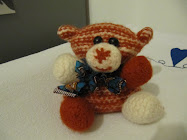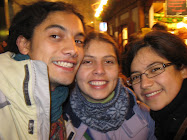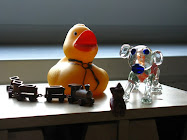



Sonnenuntergang in meinem Zimmer
Puesta de sol en mi cuarto
Sunset at my room
Puesta de sol en mi cuarto
Sunset at my room

viajes por ahí


Manchmal träume ich davon, dass ich nicht immer nur blühen muss, sondern Zeit, Ruhe habe, um Kraft für neue Triebe zu sammeln.A.S.


Es wäre besser ich hätte manches nicht getan.
Ich war heut auf dem Trödelmarkt der Träume
am Rand der Welt, da gab es allerhand:
Gestohl'nes, Weggeworf'nes und Kaputtes,
Traumzeug aus zweiter und aus dritter Hand.
Fliegende Teppiche voll Mottenlöcher,
Luftschlösser ohne Schlüssel, rostzerfressen,
und Puppen, eins geliebt, jetzt ohne Kopf...
Und unter all dem Plunder hab ich plötzlich
auch unserer Liebe schönen Traum gesehn.
Sein Gold war blind, er war zerbrochen, aber
er war es doch - und war noch immer schön.
Ich hätte ihn dir gern zurückgegeben
und hab den bleichen Kerl danach gefragt.
Er hat mich zahnlos angegrinst, gehustet,
und einen unverschämten Preis gesagt.
Zwar war er's wert - trotzdem hab ich gehandelt.
Der andre schwieg, doch wurde er nicht weich.
So konnte ich den Traum nicht wieder kaufen.
Mir geht's nicht gut. Ich bin nicht mehr so reich.
Eins hätt' ich gern gewußt, als ich am Ende
mit leeren Händen abgezogen bin:
War er verschenkt - gestohlen - weggeworfen?
Mein Schönes, sag - wie kam der Traum dorthin?
No, si a Guatemala es difícil. Yo no entiendo por que la gente se queda viviendo acá, si te lastima tanto. Siento que es, porque de pronto hay muy pocas cosas, pero esas pequeñas cosas son lo suficientemente grandes como para amarrarte.


